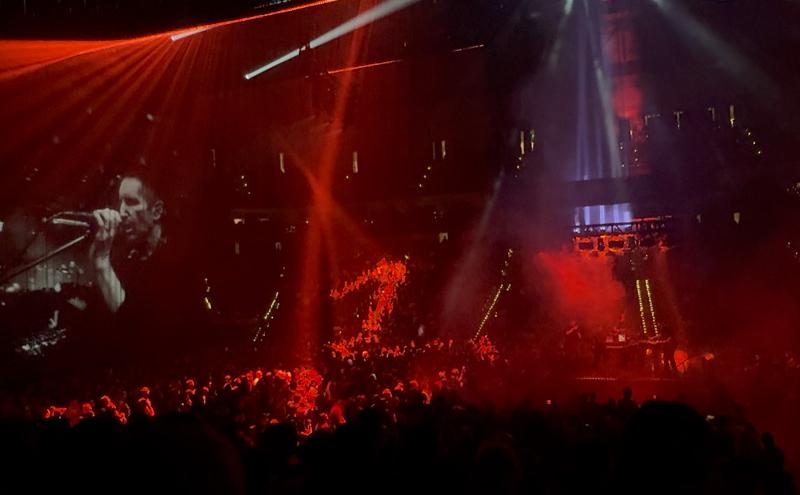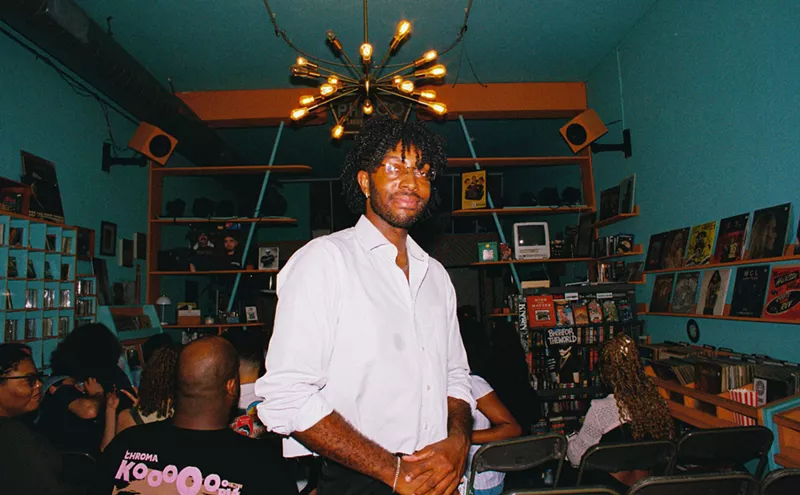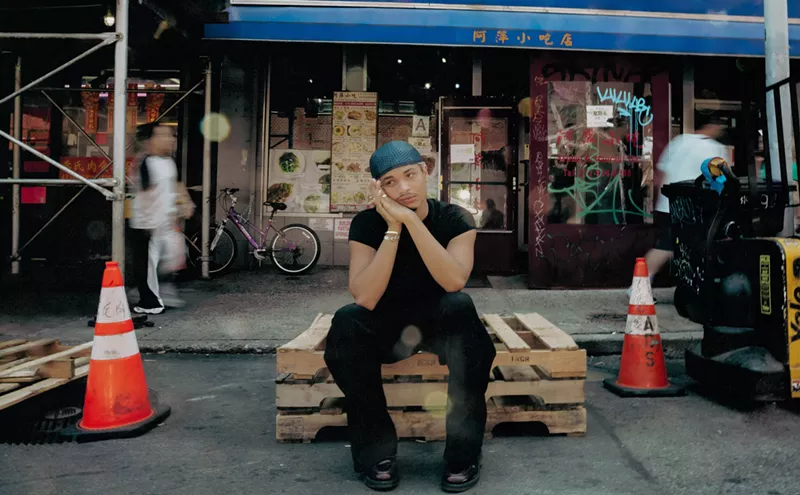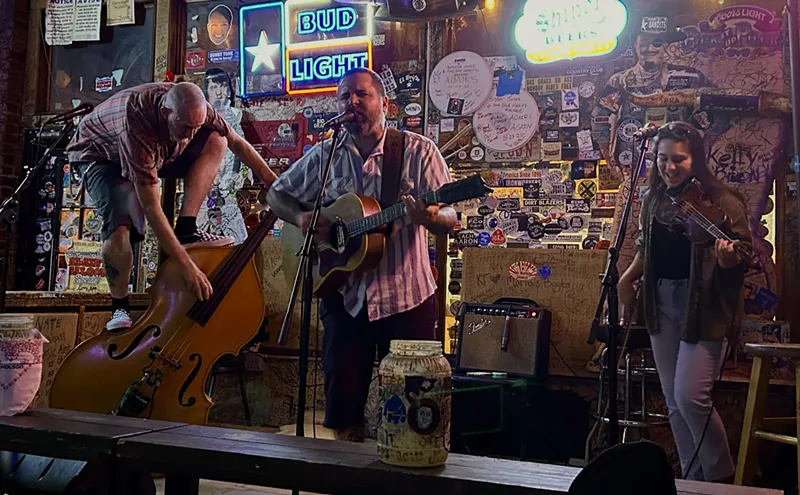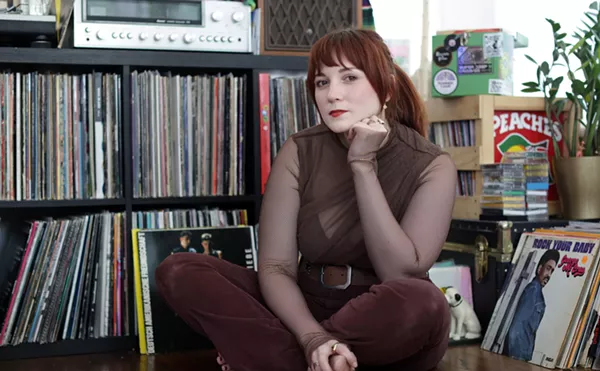The album serves as both a nostalgic vestige for children raised on the Charlie Brown Christmas special that airs annually on CBS-TV and as a stand-alone monument to Guaraldi's vision of Charles Schulz's characters, these frail little children "confronted with the illogical, blind, and mechanistic world," as the late San Francisco Chronicle jazz critic Ralph J. Gleason wrote in the album's original liner notes. And, as Wynton Marsalis puts it in the liner notes for his 1995 Joe Cool's Blues, "When I was a boy, the only time you would hear jazz on television was when Charlie Brown came to town."
Guaraldi's music for A Charlie Brown Christmas became far more influential than he would ever know. He was 47 years old in February 1976, when he died of a heart attack between sets at a club in San Francisco. He would never hear the records Wynton Marsalis and George Winston recorded in his honor; he would never hear Shawn Colvin's just-released tender reading of his ballad "Christmas Time is Here." Indeed, this year alone Chicago, Brian McKnight, Kenny Loggins, jazz singer Diana Krall, and a handful of others have recorded versions of "Christmas Time is Here," joining Mel Torme, Rosemary Clooney, Combustible Edison pianist Brad Meldhau, even guitarist Steve Vai on the long list of those who've recorded the song. The tune, with or without lyrics, is as lovely as any holiday standard, indestructible even in the soft, wet hands of Loggins.
Yet, surprisingly, this story about the beloved Christmas album is not filled with much goodwill toward men. Indeed, the more one digs into the history of A Charlie Brown Christmas, the more one uncovers grumbling and bitterness--not to mention a few other tidbits of revisionist history. Who in Linus' name would have thunk it? Guaraldi's venerable album, the musical counterpart to a television special about a big-headed Everychump and his rickety little tree and the true meaning of Christmas, comes bearing controversy.
It's like finding out there's no Great Pumpkin.
The whole squabble concerns just who plays on A Charlie Brown Christmas. As it turns out, Fantasy Records, which released most of Guaraldi's work during his lifetime, has always had the wrong performance credits on the record, meaning that the musicians forever credited--bassist Monty Budwig and drummer Colin Bailey--don't even play on A Charlie Brown Christmas. For die-hard fans of the album, the revelation is a little like finding out Ringo Starr and George Harrison didn't play on Revolver. It changes history just enough.
Fact is, the original vinyl version of A Charlie Brown Christmas, released in the 1960s, didn't feature any performance credits, just Gleason's winsome, knotty liner notes. Only when Fantasy reissued the album on CD in the mid-1980s did the label see fit to include the roster of musicians playing on the record--then got it wrong.
And, as it turns out, the soundtrack isn't really even a soundtrack.
Good grief.
"The credits are wrong," says Bill Belmont, Fantasy's director of international sales. "Or semi-wrong, not exactly right--or weird. But this is what happens when you enter Snoopyland. It is a whole other world."
Belmont only discovered the credits foul-up a year ago, when he received a phone call from an irate Fred Marshall, who called demanding to know why he and drummer Jerry Granelli weren't properly credited on the album instead of Budwig and Bailey. In an interview, the bass player says he waited more than 30 years after the fact to call Fantasy on the mistake because he only just discovered it. Last December, his daughter went to a music store to buy the CD version of the record her daddy played on...and discovered someone else's name was in his place. Marshall's daughter promptly took the album back to the store and said she didn't want one that had the wrong name on it.
"My kids were raised with the record, as were most kids I've ever met anywhere," says Marshall, reached at his Oakland, California, home. "That's why my daughter was so heartbroken when she went to buy the record and found out my name wasn't on it. It was kind of a shock to have your work attributed to someone else. I don't want to have other people's work attributed to me. When you do something you feel good about, it's strange to know there's another name at the end of it."
When Marshall called, Belmont was actually in the middle of putting together the just-released Charlie Brown's Holiday Hits, featuring songs from A Charlie Brown Christmas and several previously unreleased tracks Guaraldi wrote and performed for 14 other Charlie Brown specials. Belmont didn't know what the hell Marshall was talking about and didn't much believe him, even though Marshall and Granelli were well known as part of Guaraldi's trio during the mid-1960s. Belmont had always believed that the credits listing Budwig and Bailey--two members of Guaraldi's early '60s trio--were correct, though Guaraldi was notorious for his indifference to keeping exact records of who played what and when.
Besides, Belmont says, "Where was Fred Marshall for 30 years?"
Likely, the confusion stems from the fact that Bailey and Budwig did in fact perform some music that appeared in the Charlie Brown Christmas TV special. But, you see, the album isn't the soundtrack to the special. Actually, it's the other way around: The record was cut before the cartoon was made and, in some ways, served as the inspiration for the crudely drawn special that became the first of 58 Peanuts half-hour cartoons.
It's not as confusing as it seems.
Vince Guaraldi, Fred Marshall, and Jerry Granelli recorded two albums of music based on the Peanuts characters before the Christmas special even appeared 34 years ago. During the early 1960s, Guaraldi and his trio, which featured a rotating roster, were appearing regularly at a club called the Trident on the pier in Sausalito. Guaraldi had already recorded two albums with an entirely different trio and had also appeared on albums with vibraphonist Cal Tjader and Brazilian guitarist Bola Sete.
In 1962, Guaraldi and his trio--which then included Bailey and Budwig, who was about to quit the band and move to Los Angeles--recorded their own album titled Jazz Impressions of Black Orpheus, which spawned the Grammy-winning jazz-pop hit "Cast Your Fate to the Wind." The tune is recognizably Guaraldi's--the sound of a self-proclaimed "reformed boogie-woogie" pianist fusing his cool-jazz leanings with his Afro-Cuban fetishes. That same year, the Vince Guaraldi Trio, which by then featured Marshall on bass and Bailey on drums, cut a live record at the Trident, titled In Person. Shortly after that, Bailey also split for L.A. and was replaced by Jerry Granelli.
In 1963, Guaraldi had been contacted by television producer Lee Mendelson about providing the music to a documentary about Charlie Brown and his creator, which Mendelson was going to produce and sell to a network. Guaraldi had been recommended to Mendelson by Ralph Gleason, who was an enormous fan of Guaraldi's from the pianist's days on the San Francisco scene, including a brief stint with the Lighthouse All-Stars.
Guaraldi, Marshall, and Granelli went into a San Francisco studio and cut the record originally titled Jazz Impressions of A Boy Named Charlie Brown, which featured the first-ever recording of "Linus and Lucy" (or "The Peanuts Theme," as it's known among fans and anyone who's seen the Nissan commercial featuring the dog pushing the man in a recliner down the street). The documentary, titled A Boy Named Charlie Brown, never aired, though Fantasy did release an album of the same name and labeled it as "the original sound track recording of the CBS television special."
The original vinyl version of A Boy Named Charlie Brown didn't make any mention of who played on the record. The only people pictured on the sleeve were Guaraldi, Schulz, Mendelson, and Bill Melendez, the director of the aborted documentary. So when Fantasy reissued the disc several years ago, Budwig and Bailey were listed as the Guaraldi Trio. No one at the label, which had changed hands several times since its formation in 1949, knew any better.
Around the same time, Guaraldi, Marshall, and Granelli also recorded a second record of Christmas music, which Guaraldi wanted to do because only a handful of jazz Christmas records existed. With his own children around the same age as Charles Schulz's Peanuts characters, Guaraldi thought it a delightful idea--a jazz record for children and their parents to enjoy together.
"The other Christmas things were maudlin," Marshall says. "It seems like our Christmas heritage had come from the war and were about people suffering. This [A Charlie Brown Christmas] isn't like that. It doesn't make you feel sad when you hear it. Sometimes when you're making a record, you get a funny feeling that a lot of people are going to hear this, and I remember getting that feeling when we made this record. Nobody can predict a hit, but I had that feeling."
Mendelson liked the result so much that he convinced Schulz to create a half-hour cartoon that would feature music from the recordings. Inevitably, A Charlie Brown Christmas would also cannibalize music from the never-released documentary, using such songs as "Charlie Brown Theme" and "Linus and Lucy." But when it came time to put the music in the final cartoon, Mendelson and director Melendez realized they needed shorter versions of some of the songs. So Guaraldi went to L.A., rounded up the old band of Budwig and Bailey, and went into a Hollywood studio and laid down some abbreviated versions, referred to as "cues."
While there, the reformed trio also recorded some extra tracks: One, a version of "Fly Me to the Moon," would end up on the CD version of A Boy Named Charlie Brown; the other, "Greensleeves," appears as a bonus track on the Charlie Brown Christmas disc. Which means that Bailey and Budwig's contributions do indeed appear in the special, just not on the record--save, of course, for "Greensleeves."
As if that's not confusing enough, Mendelson's son Glenn (whose sixth-grade class provided the vocals for "Christmas Time is Here") says two other musicians also laid down some tracks for the TV special, bassist Eugene Firth and drummer Paul Distel. Indeed, they're the only two players Guaraldi listed in a studio-session report he had to file with the American Federation of Musicians, which insisted on such formalities for television recordings. All of which means there are perhaps no less than three different bands contributing music to the actual cartoon. But only three musicians perform on the so-called "original sound track" to the CBS special: Guaraldi, Marshall, and Granelli.
"We have no way of knowing who played on what," Belmont says. "It's unclear...who played on the TV show. There's three or four different collections of personnel, and no one knows, since Vince is dead. That's all I can tell you. I hate this crap."
OK, so it's a little confusing and frustrating, especially when talking to Colin Bailey, who to this day believes he and the late Monty Budwig appear on the record. "There's nothing much really to tell about the recording," Bailey says. "It was simple, but it was fun. Vince was never serious. It was always loose. It was a happy thing. Everybody was laughing. It was always like that with Vince. And thank God the kids get to hear something good on television. The shit they listen to now is all brain-dead. It's good to have something that may jolt them toward a better life."
Bailey--who went on to record the music for It's the Great Pumpkin, Charlie Brown and a few other specials--says he didn't even know the album existed in any form until "several years ago." He and his wife were shopping in a Bay Area record store when she heard what sounded like Guaraldi's music playing on the store speakers and asked the clerk what that was from. He told her it was A Charlie Brown Christmas. The couple purchased a copy, only to see Colin's name listed in the credits. He was surprised to learn of the disc's existence, even more shocked when he realized he had never received a penny in royalties from Fantasy. "But like everything else in the music business," he says, "the musicians are always the last to find out about anything."
Including the fact that they don't play on records they're listed on. When informed that the brand-new copies of A Charlie Brown Christmas and Charlie Brown's Holiday Hits list Marshall and Granelli as the primary band, Bailey balks. "Fantasy must have screwed it up," he says. "They're notorious for having the wrong information."
Of course, none of this bickering diminishes the album's stature. It's just a reminder that even grown-ups can act like children at the most wonderful time of the year. Charlie Brown might actually understand. The poor schlub never got credit for anything he did, either.



